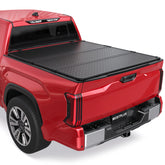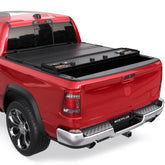Fuel Pump: Role, Wear and Testing
As part of your vehicle's fuel system, the fuel pump is the part that starts the engine cycle. It is responsible for moving fuel and injecting it into the fuel line. However, the fuel pump can sometimes fail, which can seriously affect the operation of your vehicle.
What is a fuel pump?
Also known as a booster pump, diesel pump or gasoline pump, a fuel pump allows more fuel to be injected into the fuel line. No matter what speed you're driving, the fuel level is the same. The excess is then injected back into the circuit by a pressure regulator. This regulates the use of fuel.
When the car is stationary, a high-pressure pump maintains the pressure. This prevents the fuel from evaporating and air from entering.
The fuel pump's job is to deliver fuel to your vehicle's engine. To understand how it works, the fuel is pumped through a system of rollers. The fuel is then pumped under pressure to the injectors. The fuel then passes through a gasoline or diesel filter, which filters out any impurities.
The fuel pump is powered by a 12-volt electrical circuit. This part rotates at the same speed. Thanks to the pressure regulator, the fuel cannot reach a pressure higher than 10 bars. A safety valve takes over in case of failure.

There are two types of fuel pumps:
- A mechanical fuel pump: this type of fuel pump is generally found on carbureted engines and therefore on older vehicles. The mechanical fuel pump is driven by the rotation of the camshaft or the oil pump (for rear-wheel drive vehicles).
It consists of a rod, a spring-loaded diaphragm and two valves that allow the gases to enter and leave the combustion chamber.
- The electric fuel pump: this can take several forms (speed, roller, centrifugal). The current used to activate the electromagnet core is supplied and interrupted at regular intervals by means of electrical connections.
How does a fuel pump work?
How a fuel pump works depends on its type: piston pump or diaphragm pump.
The piston pump
For a better understanding, let's take stock of the main components:
- A piston
- A plunger
- A pressure chamber
- A delivery spring
The pump works in two stages. First, the plunger pushes the piston downward. This allows the fuel to be sucked into the pressure chamber. This is the transfer stage. In the second stage, the piston is pushed back up by the action of the delivery spring. This fills the suction chamber. This pushes the fuel back into the system. This is the suction/transfer phase.
The plunger feed pump is located on the injection pump.

Diaphragm Pump
This type of pump essentially consists of:
- A diaphragm
- A control lever
- A control cam
- A delivery spring
The principle of operation is similar to that of the piston feed pump. Both the control lever and the cam pull the pump diaphragm downward. This is the suction phase. The pressure spring then pulls the diaphragm back up. This is the discharge phase.
The engine block houses the diaphragm fuel pump.
Where is the fuel pump located?
The first fuel pumps were mounted on the engine. But with the advent of induction engines, the trend has changed. Now you will find this part in the fuel tank of your vehicle.
It's an electric pump connected to the engine by a line. Through this connection, the engine receives the fuel it needs.

How can I tell if a fuel pump is broken?
The fuel pump is a part that can last a very long time. In principle, it does not require any special maintenance. However, its electrical components can wear out over time. This will prevent the fuel pump from delivering fuel to the engine.
This can cause a number of symptoms:
- Fuel does not reach the injection pump.
- Jerking due to insufficient fuel being delivered to the engine.
- Difficulty starting the engine.
- Engine stalling.
- Loss of power.
- Difficulty getting up to speed.
- Noise coming from the fuel tank (although this is less common).
The fuel pump is not always to blame. These signs can also indicate bad wiring or a bad contact. But the problem that definitely indicates that the fuel pump is actually faulty is the appearance of hissing noises.
How to test a fuel pump?
If you have any doubts about the condition of your fuel pump, you can test it yourself. You'll need tools such as a multimeter and a pressure gauge.
Step 1: Measure fuel pump voltage
First, you will need to locate your fuse box and the fuse that corresponds to the fuel pump. Generally, the problem is due to a problem with the power supply to your pump. So don't forget to check the condition of your fuse: if it's blown, damaged or the wire has melted, you need to replace it immediately.
But make sure that the new fuse has the same amperage as the old one. If it's a blown fuse, find the source of the power surge.
If it's not a problem with the fuse, use a multimeter to measure the voltage across your fuel pump. Refer to your owner's manual for instructions on how to measure the voltage, as practices vary from vehicle to vehicle.
Step 2: Measure the fuel pump fuse voltage
Check that power and ground are working properly at the fuel pump, still using your multimeter. Check the manufacturer's manual for the voltage standard. If there is a difference, you have a fault in the electrical circuit of your fuel pump.
Step 3: Perform a fuel pump relay and pressure test
To make sure the fault is not coming from the fuel pump relay, remove it from its connector and identify the control terminals on it. Set your multimeter to ohmmeter mode and measure the resistance between the terminals.
Then connect the pressure gauge to the fuel pump. Make sure that it is connected to the hermetic seal in the vicinity of the fuel pump.
You will need the help of another person to depress the accelerator pedal while you perform this test. Check the fuel pressure at idle and at higher engine speeds. Compare the readings with the manufacturer's recommendations. Your fuel pump is malfunctioning if your manometer stops when your engine is running.

How do I replace a fuel pump?
Replacing a fuel pump is a complex operation that requires the services of a professional unless you are an experienced mechanic. This is especially true if it is installed directly in the fuel tank. There are several steps involved, which are summarized below:
- Disconnect the battery to avoid the risk of electric shock.
- Locate the cover that protects access to the pump assembly.
- Remove the cable protector, then disconnect the terminal.
- Unscrew the cover.
- Pinch the bellows seal to separate it from the cover.
- Remove the cover, then clean the area.
- Remove the rubber clip holding the return hose, then unscrew the collar.
- Unscrew and carefully remove the pump assembly, taking care not to bend the dipstick.
- Replace the gasket if necessary.
- Gently remove the fuel pump.
- Attach the flexible hose to the new pump.
- Secure the new pump with a metal clamp, making sure the filter is properly aligned.
- Tighten the bolts, taking care not to reverse them.
- Install the pump unit in its housing, avoiding any obstruction of the gauge.
- Install the return hoses and replace the clips.
- Screw the pump unit back on, then the cover.
- Replace the cable protector, taking care not to pinch the cable.
- Reconnect the battery.
The fuel pump is essential to the smooth operation of your vehicle, although it may not be the most recognizable part. It can sometimes deteriorate over time. When this happens, you need to make sure you replace it as soon as possible, otherwise you risk losing performance. Visit MOSTPLUS to compare the different offers from garages near you and find the best value for money.
Featured Products
- $479.99
$499.99- $479.99
- Unit price
- / per
- $549.99
$549.99- $549.99
- Unit price
- / per
- $489.99
- $489.99
- Unit price
- / per
- $469.99
$489.67- $469.99
- Unit price
- / per














